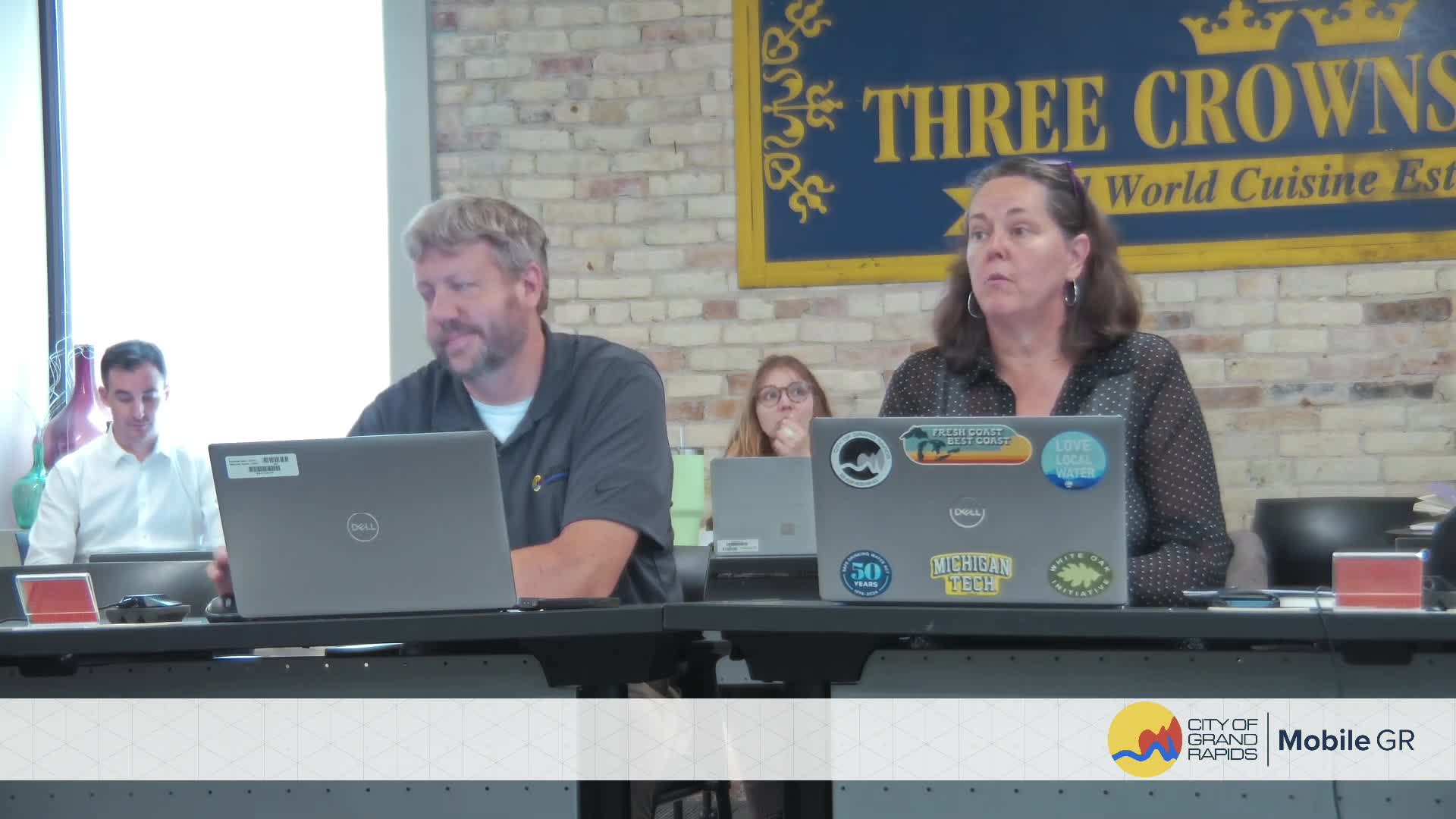Grand Rapids Vital Streets Program Marks 15 Years of Community Investment and Sidewalk Improvements
August 01, 2025 | Grand Rapids City, Kent County, Michigan
This article was created by AI summarizing key points discussed. AI makes mistakes, so for full details and context, please refer to the video of the full meeting. Please report any errors so we can fix them. Report an error »

The Mobile GR Commission meeting held on July 10, 2025, in Grand Rapids, Michigan, focused on the integration of the Vital Streets initiative with ongoing transportation and infrastructure projects. The meeting began with a review of the current budget and investment strategies related to the Vital Streets program, which aims to improve the city's road and sidewalk conditions.
Key discussions highlighted the importance of the Bicycle Action Plan and its alignment with the Vital Streets initiative. The commission emphasized the need for a cohesive approach to enhance both bicycle and pedestrian infrastructure. The Vital Streets program, initiated in 2013, was designed to address the city's deteriorating road conditions, with a significant portion of roads classified as poor at that time.
The commission reported that the initial 15-year investment strategy is nearing completion, with plans to renew funding in 2030. The oversight commission has been established to review investment strategies, ensuring equitable distribution of funds across the city's three wards. A notable commitment from the city includes an additional $13 million in general operating funds to support the Vital Streets initiative, a request driven by local business interests.
A significant change in policy was also discussed regarding sidewalk maintenance. The city has taken ownership of sidewalk improvements, which previously placed the burden on homeowners. This shift allows for more efficient repairs and upgrades, as the city can manage larger projects rather than individual repairs. The commission noted that this has led to increased public satisfaction, with many residents expressing appreciation for the improvements.
The meeting also addressed the systematic asset management planning approach, focusing on preventative maintenance to extend the lifespan of existing infrastructure. The commission reported that, as of 2024, 62% of the city's roads are now classified as good or fair, a positive trend attributed to the ongoing investments.
In terms of funding, the primary source remains the income tax, contributing nearly $18 million annually, supplemented by state revenues and grants. The commission highlighted the importance of transparency and communication with the public regarding the progress and impact of the Vital Streets initiative.
Overall, the meeting underscored the collaborative efforts to enhance Grand Rapids' transportation infrastructure, with a strong focus on pedestrian safety and accessibility. The commission plans to continue tracking progress and engaging with the community as they move towards the renewal phase in 2030.
Key discussions highlighted the importance of the Bicycle Action Plan and its alignment with the Vital Streets initiative. The commission emphasized the need for a cohesive approach to enhance both bicycle and pedestrian infrastructure. The Vital Streets program, initiated in 2013, was designed to address the city's deteriorating road conditions, with a significant portion of roads classified as poor at that time.
The commission reported that the initial 15-year investment strategy is nearing completion, with plans to renew funding in 2030. The oversight commission has been established to review investment strategies, ensuring equitable distribution of funds across the city's three wards. A notable commitment from the city includes an additional $13 million in general operating funds to support the Vital Streets initiative, a request driven by local business interests.
A significant change in policy was also discussed regarding sidewalk maintenance. The city has taken ownership of sidewalk improvements, which previously placed the burden on homeowners. This shift allows for more efficient repairs and upgrades, as the city can manage larger projects rather than individual repairs. The commission noted that this has led to increased public satisfaction, with many residents expressing appreciation for the improvements.
The meeting also addressed the systematic asset management planning approach, focusing on preventative maintenance to extend the lifespan of existing infrastructure. The commission reported that, as of 2024, 62% of the city's roads are now classified as good or fair, a positive trend attributed to the ongoing investments.
In terms of funding, the primary source remains the income tax, contributing nearly $18 million annually, supplemented by state revenues and grants. The commission highlighted the importance of transparency and communication with the public regarding the progress and impact of the Vital Streets initiative.
Overall, the meeting underscored the collaborative efforts to enhance Grand Rapids' transportation infrastructure, with a strong focus on pedestrian safety and accessibility. The commission plans to continue tracking progress and engaging with the community as they move towards the renewal phase in 2030.
View full meeting
This article is based on a recent meeting—watch the full video and explore the complete transcript for deeper insights into the discussion.
View full meeting
